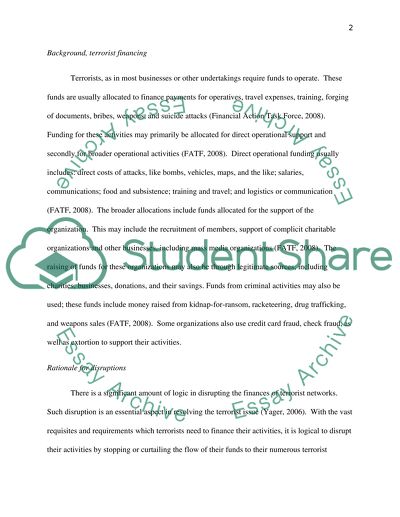Cite this document
(“Disrupting Terror Group Finances to Exploit Weaknesses in Terrorist Research Paper”, n.d.)
Retrieved from https://studentshare.org/miscellaneous/1608322-disrupting-terror-group-finances-to-exploit-weaknesses-in-terrorist-organizations
Retrieved from https://studentshare.org/miscellaneous/1608322-disrupting-terror-group-finances-to-exploit-weaknesses-in-terrorist-organizations
(Disrupting Terror Group Finances to Exploit Weaknesses in Terrorist Research Paper)
https://studentshare.org/miscellaneous/1608322-disrupting-terror-group-finances-to-exploit-weaknesses-in-terrorist-organizations.
https://studentshare.org/miscellaneous/1608322-disrupting-terror-group-finances-to-exploit-weaknesses-in-terrorist-organizations.
“Disrupting Terror Group Finances to Exploit Weaknesses in Terrorist Research Paper”, n.d. https://studentshare.org/miscellaneous/1608322-disrupting-terror-group-finances-to-exploit-weaknesses-in-terrorist-organizations.


